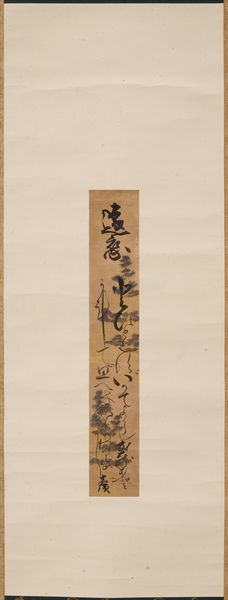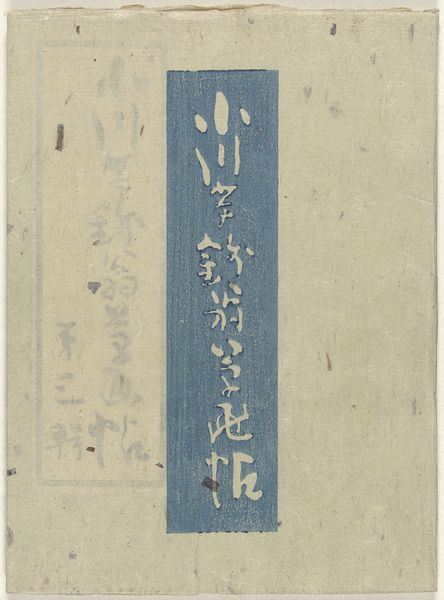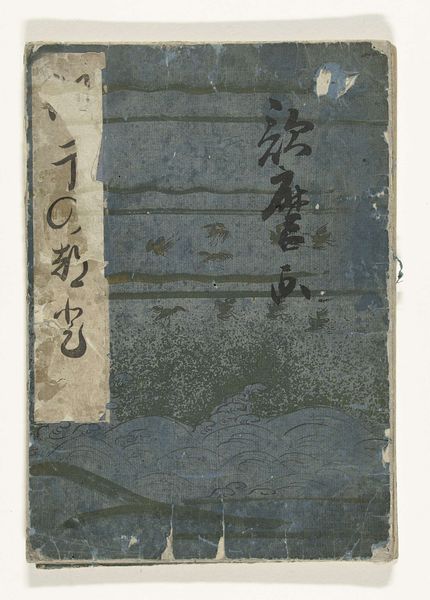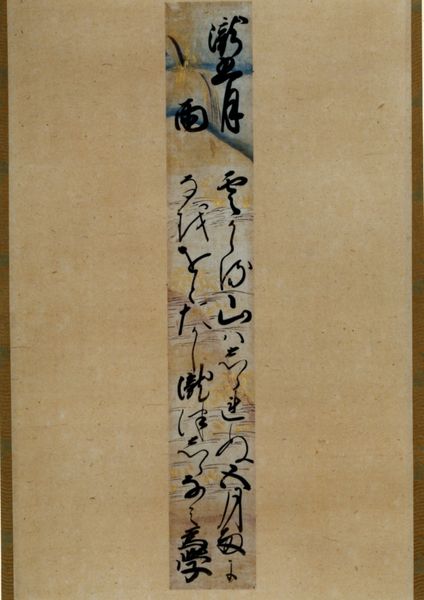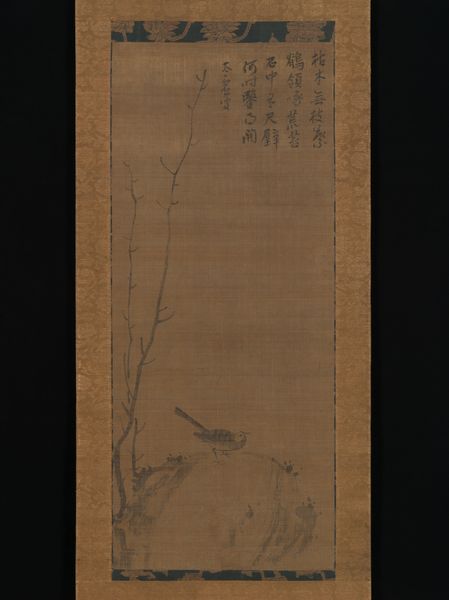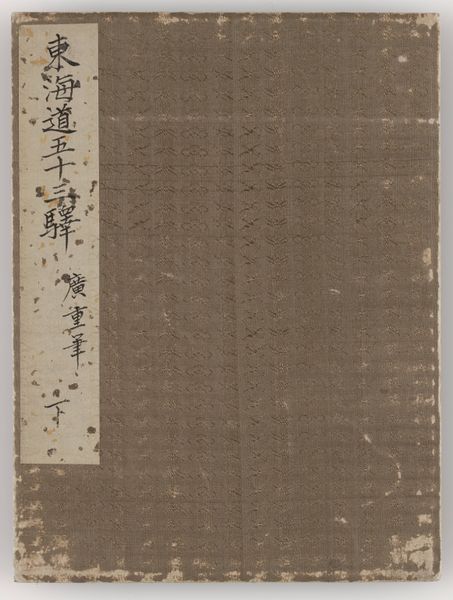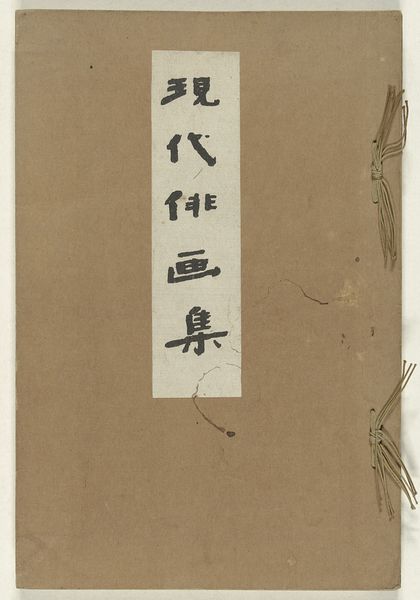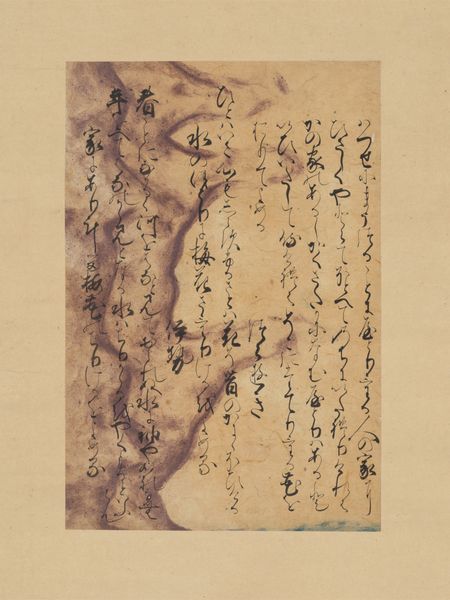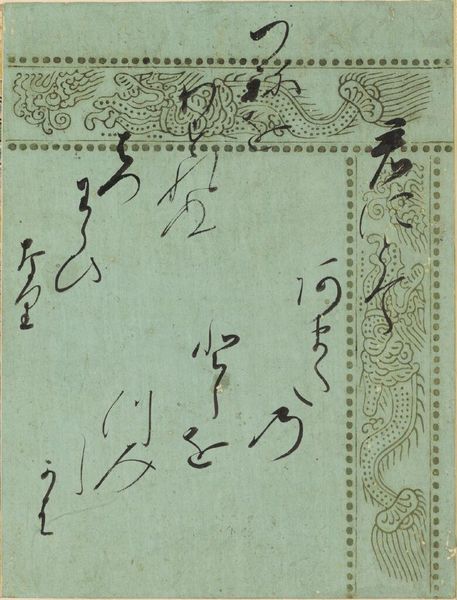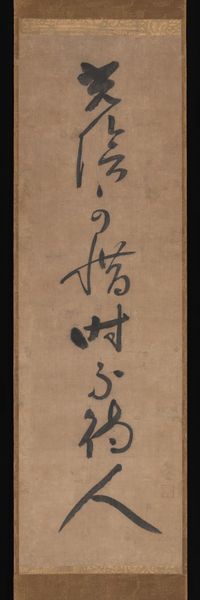
tempera, paper, ink
#
tempera
#
asian-art
#
paper
#
ink
#
watercolor
#
calligraphy
Dimensions: Image: 14 × 2 3/8 in. (35.6 × 6 cm) Overall with mounting: 60 × 11 5/8 in. (152.4 × 29.5 cm) Overall with knobs: 60 × 13 1/2 in. (152.4 × 34.3 cm)
Copyright: Public Domain
This Waka Poem was brushed by Emperor Go-Yōzei in Japan, sometime between the late sixteenth and early seventeenth centuries. At first glance, the symbols may seem simply calligraphic, but each stroke carries a depth of cultural meaning. The flowing script of the poem embodies the Japanese aesthetic of mono no aware—an awareness of the transience of things, tinged with a gentle sadness. Notice how the characters cascade down the scroll like falling blossoms, a visual metaphor for the fleeting nature of life. We see this motif mirrored in the Pre-Raphaelite paintings of Europe, where Ophelia is depicted floating amidst flowers—a universal symbol of beauty and its inevitable decay. The motifs of blossoms evoke powerful emotions: love, loss, and nostalgia. This same sentiment echoes in the vanitas paintings of the Dutch Golden Age, where wilting flowers remind us of our mortality. The cyclical nature of these images invites us to contemplate the constant interplay between life and death, beauty and decay, reminding us that every end is also a beginning.
Comments
No comments
Be the first to comment and join the conversation on the ultimate creative platform.
